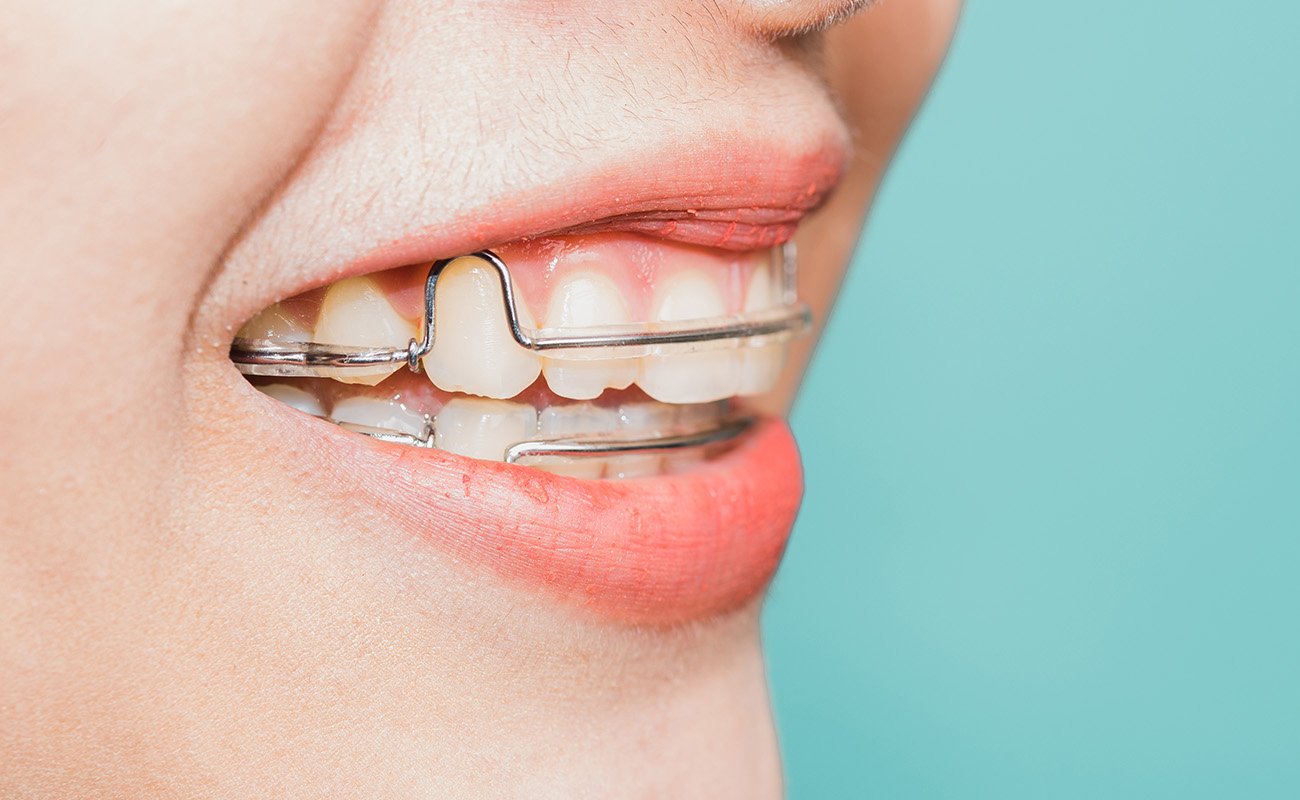For those seeking straighter teeth, orthodontic treatment presents different options beyond just traditional metal braces. Deciding between alternatives like retainers depends on your specific dental needs and personal preferences. While braces remain the gold standard for major realignment cases, retainers and other appliances can be effective options for select situations. To make the best decision, it’s important to understand the key differences between these orthodontic treatments.
Retainers vs Braces
Retainers and braces both serve specific purposes in orthodontic treatments. They are used to align and straighten teeth, correcting various dental issues. However, there are distinct differences in their function, application, and cost.
Braces
Braces are orthodontic devices typically used to correct malocclusions, such as overbites, underbites, and crowded teeth. They exert a constant force on the teeth to gradually shift them into proper alignment. Braces are usually worn for an extended period, ranging from months to several years, depending on the dental need.
See also: What is the Difference Between Braces and Retainers?
Retainers
On the other hand, retainers are custom-made devices that help maintain the corrected position of teeth after wearing braces or other orthodontic appliances. They can be removable or permanently bonded to the teeth, depending on the patient’s needs and preferences.
Teeth retainers work by applying gentle pressure on the teeth, ensuring they stay in their new position while allowing the bone surrounding the teeth to remodel and stabilize. This helps prevent teeth from reverting to their original alignment and promotes long-lasting results for patients who have undergone orthodontic treatment.
When Can You Get Retainers Without Braces?
After discussing the differences between braces and retainers, it’s important to identify situations where only retainers are needed. Here are specific cases where braces may not be required:
Minor Teeth Movement
In cases of minor teeth movement, retainers can be used without braces to correct slight misalignments. This method is ideal for patients who have small gaps or minor crowding and do not require extensive orthodontic treatment.
Early Intervention in Children
For children, early orthodontic intervention can help guide the growth and development of their teeth and jaw. In some cases, retainers can be used as a standalone treatment to correct minor issues or used in conjunction with other orthodontic appliances.
Post-Invisalign or Other Aligner Systems
Retainers are often required after completing treatment with Invisalign or other clear aligner systems. These appliances help maintain the new position of the teeth and prevent them from shifting back to their original state.
Aging
As people age, teeth may naturally shift due to various factors, such as bone loss or wear and tear. In these cases, retainers may be prescribed to help maintain the alignment of the teeth and prevent further shifting.
Pros and Cons of Using Retainers Without Braces
While braces are commonly used for major orthodontic treatment, retainers alone can be an option for some patients. Let’s weigh the key pros and cons of using retainers without braces to correct minor dental issues.
PROS:
- Retainers can be effective in addressing minor bite issues or mild misalignments without the need for traditional braces. They can be a more comfortable and aesthetically pleasing option than braces.
- Retainers are removable, which makes eating and dental care easier when compared to fixed braces.
- Retainers can also be more cost-effective in certain cases than other orthodontic treatments like braces or aligners.
CONS:
- Retainers alone may not be suitable for patients with severe dental issues or more complex orthodontic needs. Braces or aligners might be necessary in such situations.
- Removable retainers require a high level of patient compliance, as proper wearing and care are essential for the best results.
- Retainers might need periodic adjustments or replacements, adding to their long-term costs.
Types of Retainers
There are two primary types of retainers: removable and permanent:
Removable Retainers
Removable retainers can be taken out when eating or cleaning, making them a convenient option for many patients. Among removable retainers, the Hawley and Essix retainers are the most common choices. The Hawley retainer consists of a wire that wraps around the teeth, connected to an acrylic or plastic material that rests against the roof of the mouth or behind the lower teeth. Essix retainers, on the other hand, are clear and visually similar to clear aligners, providing a discreet appearance.
Permanent Retainers
Permanent or fixed retainers are bonded directly to the teeth, typically on the backside, making them invisible when smiling. They offer constant support and hold the teeth in place effectively. However, they may require more attention during oral hygiene routines to prevent plaque buildup on and around the retainer.
See also: Invisalign Retainers for Life: A Lifetime Investment for Your Smile

Retainer Maintenance and Care
Retainers play an important role in keeping teeth in their corrected positions. Like any dental appliance, they require consistent care and proper handling to remain effective and extend their lifespan. Let’s explore some key recommendations from orthodontists regarding retainer wear duration, cleaning procedures, and storage. Following these best practices helps retainers last longer, function better, and provide long-lasting results.
Recommendations on Wear Duration
Orthodontists often advise patients to wear retainers all the time right after their braces are removed. This is because teeth can quickly shift back to their old position after orthodontic treatment. By wearing retainers full-time for a period that can range from a few months to a year, patients help their teeth stay in the corrected position. After this period, when the teeth are more stable, orthodontists usually recommend that patients wear their retainers only during the night to maintain the alignment and prevent any shifts.
Cleaning Procedures
Regular cleaning is important to keep retainers in good condition. Retainers can gather bacteria, plaque, and tartar. If not cleaned, this buildup can cause oral problems. It’s important to soak retainers in a cleaning solution recommended by your orthodontist and brush them with a soft-bristled toothbrush with non-abrasive toothpaste. Also, remember to rinse your retainers well before putting them back in the mouth to ensure they remain clean and effective.
Storage of Retainers
Storing retainers correctly is important for their long-term use and effectiveness. When not being worn, retainers should be kept in a durable, ventilated case. This helps reduce bacterial buildup and ensures the retainer dries properly. It’s also important to avoid placing the case near direct heat sources, as heat can change the shape of the retainer. Remember to keep them away from pets, as they can damage or chew on them. Taking care of storage can help retainers last longer and function properly.
Worth Knowing
To take proper care of retainers and protect your smile investment, establish consistent cleaning routines to remove debris, always store in cases when not worn to prevent damage, remove carefully for eating/drinking, and don’t experiment with extreme conditions.
Alternatives for Braces
If you do not want to wear traditional braces, there are several effective and discreet alternatives that can help straighten your teeth without wires and brackets. Rather than retainers, you have options that may better suit your needs and preferences:
Lingual Appliances
Lingual appliances are a type of orthodontic treatment designed to straighten teeth discreetly. Unlike traditional braces which are placed on the front of the teeth, lingual appliances are fixed to the back or lingual side of the teeth, making them virtually invisible when you smile. They function in much the same way as traditional braces, applying gentle pressure to shift teeth into their desired position. While they offer a cosmetic advantage, lingual appliances might require a longer adjustment period for some patients due to their unique positioning.
Ceramic Braces
Ceramic braces are an orthodontic treatment option that functions similarly to traditional metal braces but with a more discreet appearance. The brackets are made from a ceramic material that closely matches the color of natural teeth, making them less noticeable. While they provide an aesthetic advantage, they are slightly more brittle than metal counterparts. Thus, they may require a bit more care to avoid breakage.
See also: What Stains Ceramic Braces? Causes and Prevention Tips
Clear Aligners
Clear aligners are a modern orthodontic solution designed to straighten teeth discreetly. Made of transparent, flexible plastic, these aligners are custom-fitted to the teeth, gradually shifting them to their desired position. Unlike traditional braces, they are removable, allowing for easy cleaning and flexibility during meals. Ideal for those seeking a nearly invisible treatment option, clear aligners offer both aesthetic and functional benefits, though they’re best suited for mild to moderate orthodontic concerns.
Here are the leading invisible aligner brands and their features:
AlignerCo is a well-known brand that provides an affordable aligner program. Their prices are lower than most other aligner brands, with treatment starting at just $945, which also includes free retainers and a teeth whitening kit.

AlignerCo
The cheapest at-home aligners, with monthly plans, no down payment, and considerable discounts.
Check out AlignerCo AlignersNewSmile is one of the newest aligner brands on the market and is known for its affordability. When you purchase their aligners, you receive an impression kit, whitening foam, aligners, and retainers. This brand also provides monthly payment plans without requiring any initial payments, offers a video call option with a specialist to assist with mouth impressions, and has a user-friendly online assessment process.

NewSmile
Affordable at-home treatment with positive reviews offering superior look and comfort.
Check out NewSmile AlignersByte is a well-known brand that offers a lifetime guarantee for your aligners. This means that if your teeth don’t stay in the desired treatment position afterward, you’ll receive additional impression kits, treatment plans, and sets of aligners at no additional cost to correct any misalignments.

Byte
An affordable option with refundable impression kits, free HyperByte, and a Byte for Life guarantee.
Check out Byte AlignersCandid is a highly regarded aligner product with a treatment approach similar to Invisalign. Unlike the other brands mentioned, Candid doesn’t offer a direct-to-home ordering service. Instead, a qualified orthodontist will assess your eligibility for treatment. The advantage is that you won’t need regular appointments after starting treatment. Candid aligners are suitable for addressing both mild and severe spacing issues.

Candid
A hybrid of in-office and at-home treatment that provides 1-on-1 orthodontist support.
Check out Candid AlignersFrequently Asked Questions
Should I wear my retainer if my gums are swollen?
No, you should not wear your retainer if you have swollen or inflamed gums. The pressure of the retainer on irritated gums can further aggravate the condition and cause pain or discomfort. Let your gums heal before resuming retainer use. Be sure to keep the retainer clean while not wearing it. See your dentist to determine the cause of the gum swelling and get any needed treatment. Once your gums have returned to normal, you can start wearing your retainer again as directed.
How to floss with a permanent retainer?
Flossing with a permanent retainer requires extra care and specific techniques to ensure thorough cleaning. First, use a floss threader or super floss to access the spaces between the retainer and teeth. Insert the floss between two teeth at the gum line, sliding it gently up and down. Move the floss around the wire, then between the next pair of teeth. Repeat for all teeth, ensuring you also clean the area where the wire is attached.
How to talk with retainers?
Speaking with retainers can initially feel strange, but with practice, it becomes easier. Start by wearing them consistently to get accustomed to their presence. Read aloud daily to practice articulation, focusing on words with “s” and “th” sounds. If a lisp develops, slow down your speech and enunciate each word clearly. Over time, your tongue and oral muscles will adapt, making conversation clearer. Remember, most speech challenges with retainers are temporary and improve with consistent wear and practice.
What happens if you lose your retainer?
If you lose your retainer, your teeth may begin to shift back to their previous positions, especially if you’ve recently completed orthodontic treatment. Contact your orthodontist immediately to discuss replacement options. In the meantime, if you have an old retainer or aligner, wear it to prevent significant movement.
How to clean permanent retainers?
To clean permanent retainers, brush them gently using a soft-bristled toothbrush during your regular brushing routine. Ensure you angle the brush to reach the space between the retainer wire and the teeth. Use floss threaders or a water flosser to clean between teeth connected by the retainer, removing trapped food particles and plaque. Rinsing with an antimicrobial mouthwash can help minimize bacteria around the retainer.
How often should you get new retainers?
The frequency of replacing retainers varies based on type and individual wear. Removable retainers, such as the clear plastic or Hawley type, may need replacement every 1-3 years due to wear and tear, discoloration, or distortion. Permanent or bonded retainers can last for many years unless they become damaged. Regular check-ups with your orthodontist will help assess the condition of your retainer and determine if a replacement is necessary.
Can a retainer close a small gap?
Yes, a retainer can close a small gap, especially if the gap is minor and located between the front teeth. Retainers exert gentle pressure on the teeth, guiding them into desired positions. For minor dental misalignments or relapses after braces, orthodontists might prescribe a retainer as a standalone treatment. However, the effectiveness depends on the gap’s size and the retainer type.
How to get gum out of the retainer?
To remove gum from a retainer, first place it in the freezer for an hour to harden the gum. Once firm, gently scrape off as much gum as possible using a soft tool like a toothbrush or a plastic scraper. Avoid using sharp objects to prevent damage. Then, soak the retainer in a cleaning solution or warm soapy water, and gently brush to remove any residual gum. Rinse thoroughly before placing it back in your mouth.
What to do if Hawley retainer wire broke?
If the wire on your Hawley retainer breaks, stop wearing it immediately to avoid any potential damage or injury to your mouth. Store it safely and contact your orthodontist as soon as possible. They can assess the damage and determine if it can be repaired or if a replacement is necessary. Do not attempt to fix the retainer yourself, as improper adjustments can affect your teeth’s alignment or further damage the appliance.
How to adjust the retainer to close the gap?
Adjusting a retainer to close a gap requires expertise. It’s not recommended to adjust it on your own, as you risk damaging the retainer or adversely affecting your teeth. If you notice a gap or misalignment, consult with your orthodontist. They have the necessary tools and knowledge to make precise adjustments to the retainer.
Sources
Nedwed, V., Miethke, R. R., Motivation, acceptance and problems of invisalign patients, J Orofac Orthop., 2005; DOI: 10.1007/s00056-005-0429-0. Available online at: https://pubmed.ncbi.nlm.nih.gov/15827703/
Kacer, K. A., Valiathan, M., Narendran, S., Hans, M. G., Retainer wear and compliance in the first 2 years after active orthodontic treatment. Am J Orthod Dentofacial Orthop, 2010. DOI: 10.1016/j.ajodo.2008.12.027. Available online at: https://pubmed.ncbi.nlm.nih.gov/21055599/
Al-Moghrabi, D., Johal, A., O’Rourke, N., Donos, N., Pandis, N., Gonzales-Marin, C., Fleming, P. S., Effects of fixed vs removable orthodontic retainers on stability and periodontal health: 4-year follow-up of a randomized controlled trial; Am J Orthod Dentofacial Orthop., 2018; DOI: 10.1016/j.ajodo.2018.01.007. Available online at: https://pubmed.ncbi.nlm.nih.gov/30075919/
Raja, T. A., Littlewood, S. J., Munyombwe, T., Bubb, N. L., Wear resistance of four types of vacuum-formed retainer materials: A laboratory study. Angle Orthod (2014). DOI: 10.2319/061313-448.1. Available online at: https://meridian.allenpress.com/angle-orthodontist/article/84/4/656/57964/
Lyros, I., Tsolakis, I. A., Maroulakos, M. P., Fora, E., Lykogeorgos, T., Dalampira, M., Tsolakis, A. I., Orthodontic Retainers—A Critical Review. Children (Basel) 2023. DOI: 10.3390/children10020230. Available online at: https://www.ncbi.nlm.nih.gov/pmc/articles/PMC9954726/

